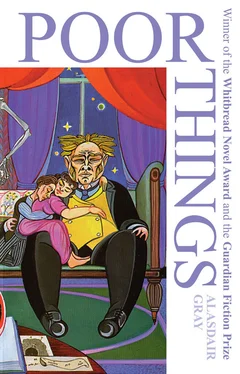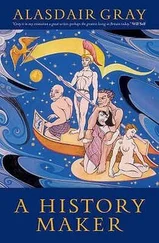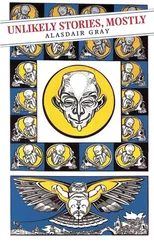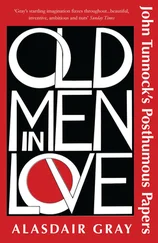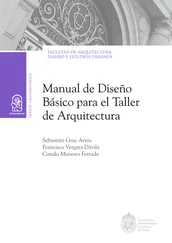Yet why did he not make it more convincing? In the twenty-second chapter, describing how my first husband shot me through the foot, he says “The bullet had luckily gone clean through into the carpet, PUNCTURING THE INTEGUMENT BETWEEN THE ULNA AND RADIUS OF THE SECOND AND THIRD METACARPALS without even chipping a bone.” The capitalized words might just convince someone who knows nothing of anatomy but they are blethers, havers, claptrap, gibberish, gobbledygook, 34and since Archie cannot have forgotten his medical training to that extent he must have known it. He could easily have said “puncturing the tendon of the oblique head of adductor hallucis between the great and index proximal phalanges without chipping a bone”, because that was what happened. But I have no time to go through every page separating fact from fiction. If you ignore what contradicts common sense and this letter you will find that this book records some actual events during a dismal era. As I said before, to my nostrils the book stinks of Victorianism. It is as sham-gothic as the Scott Monument, Glasgow University, St. Pancras Station and the Houses of Parliament. I hate such structures. Their useless over-ornamentation was paid for out of needlessly high profits: profits squeezed from the stunted lives of children, women and men working more than twelve hours a day, six days a week in NEEDLESSLY filthy factories; for by the nineteenth century we had the knowledge to make things cleanly. We did not use it. The huge profits of the owning classes were too sacred to be questioned. To me this book stinks as the interior of a poor woman’s crinoline must have stunk after a cheap weekend railway excursion to the Crystal Palace. I realize I am taking it too seriously, but I am thankful to have survived into the twentieth century . 35
And so, dear grand- or great-grandchild, my thoughts turn to you because I cannot possibly imagine the world in which this message will be read — if it ever is read. Last month Herbert George Wells (that honey-smelling man!) published a book called The War in the Air. Set in the nineteen twenties or thirties it describes how a German air-fleet invades the U.S.A. and bombs New York. This draws the whole world into a conflict which destroys every major centre of civilized thought and skill. The survivors are left in a worse state than the Australian aborigines, for they lack the aboriginal skills of hunting and scavenging. H.G.’s book is a warning, of course, not a prediction. He and I and many others expect a better future because we are actively creating it. Glasgow is an exciting place for a dedicated Socialist. Even in its earlier Liberal phase it set the world an example through the municipal development of public resources. Our skilled labour force is now the best educated in Britain; the Co-operative movement is popular and expanding; the Glasgow telephone system is being adopted by the General Post Office for extension over the United Kingdom. I know that the money which pays for our confidence and achievement has a dangerous source — huge war-ships built along Clydeside by government contract, in response to equally big destroyers being built by the Germans. So H. G. Wells’ warnings should be heeded .
But the International Socialist Movement is as strong in Germany as in Britain. The labour and trade-union leaders in both countries have agreed that if their governments declare war they will immediately call a general strike. I almost hope our military and capitalistic leaders DO declare war! If the working classes immediately halt it by peaceful means then the moral and practical control of the great industrial nations will have passed from the owners to the makers of what we need, and the world YOU live in, dear child of the future, will be a saner and happier place. Bless you .
Victoria McCandless M.D.
18 Park Circus, Glasgow .
1st August, 1914 .
NOTES CRITICAL AND HISTORICAL by Alasdair Gray
1. This was not the superstition of an ignorant woman. Bank failures were frequent during the eighteenth and nineteenth centuries, and poorer folk suffered most by them, as the prosperous were better informed as to which financial houses were unsound, or becoming so. In twentieth-century Britain such injustices only happen with pension funds.
2. In his history The Royal Doctors (published by Macmillan, 1963) Gervaise Thring gives most space to Godwin’s progenitor, Sir Colin Baxter, but says: “Between 1864 and 1869 his less well-known yet equally gifted son was attendant consultant during the delivery of three princes and a princess royal, and probably saved the life of the Duke of Clarence. For reasons perhaps connected with his precarious health Godwin Baxter withdrew into private life and died in obscurity a few years later.” In Register House, Edinburgh, there is no record of his birth, and on the death certificate of 1884 there are blanks in the spaces reserved for age and mother’s name.
3. Semmelweis was a Hungarian obstetrician. Appalled by the high death rate in the Viennese maternity hospital where he worked, he used antiseptics and cut the death rate from 12 to 1¼ per cent. His superiors refused to accept his conclusions and forced him out. He deliberately contracted septicaemia in a finger and in 1865 died in a mental hospital of the disease he had spent his life combating.
4. The following extract on this subject is from “Women and Medicine”, an entry by Johanna Geyer-Kordesch in the Encyclopaedia of Medical History , edited by W.F. Bynum: “Florence Nightingale once wrote that she didn’t wish women to become doctors at all, because they would become like their male colleagues. Nightingale’s objectives were breathtakingly broad. She wanted no less than a medical reform so thorough in prevention and care that doctors might become redundant.”
5. Michael Donnelly, indefatigable in his efforts to prove this history a work of fiction, points out that the garden here described does not mention a coach-house on the far side of it. He has visited Baxter’s old home (18 Park Circus) and asserts that the space between back entrance and coach-house is too small and sunken to have ever been more than a drying-yard. This, of course, only proves that the coach-house was built at a later date.
6. “Skeely” means “skilful”, as in the old Scots ballad Sir Patrick Spens :
The King sits in Dumfermline toun,
Drinking the bluid-red wine.
“O whaur will I find a skeely skipper
To sail this new ship o’ mine?”
7. The first ichthyosaurus was discovered by Mary Anning (the Fossil Woman of Lyme Regis) in 1810. The illustration here referred to is in Pouchet’s The Universe , a popular nineteenth-century introduction to natural history.
DWARFS OF GERMAN LEGEND BARING THE ICHTHYOSAURUS
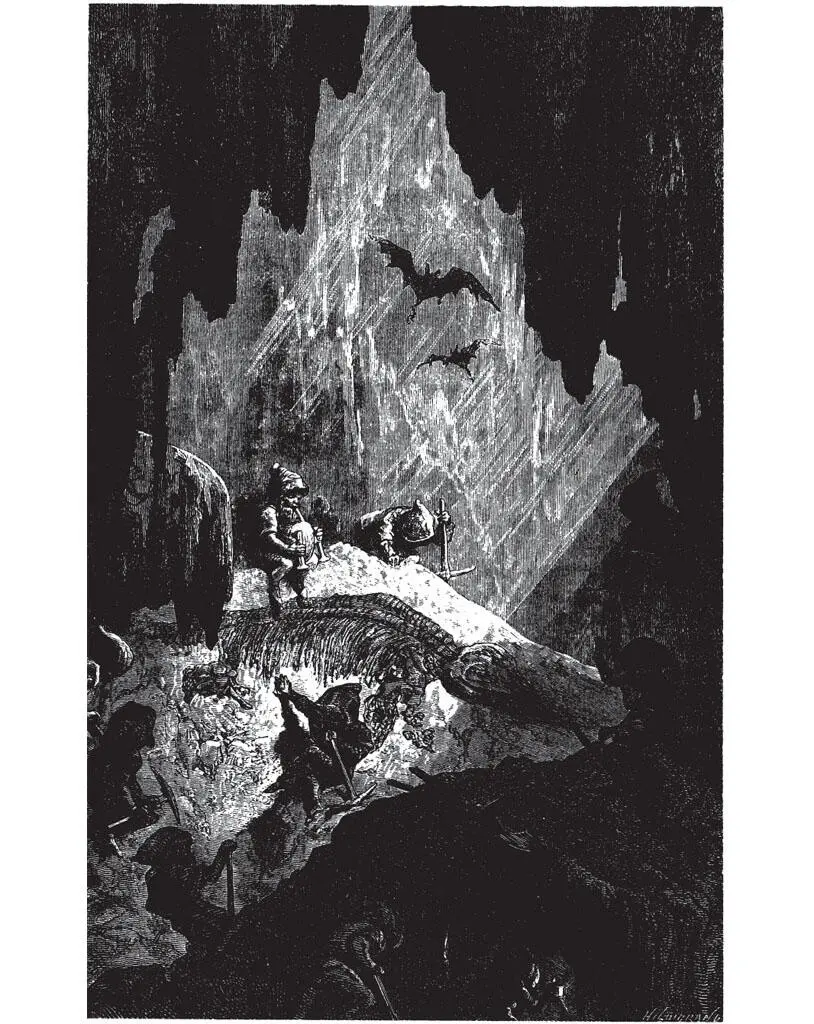
From The Universe, or, The Infinitely Great and the Infinitely Small by F.A. Pouchet, M.D.: the 9th edition published in 1886 by Blackie & Son, Old Bailey, E.C.; Glasgow and Edinburgh .
8. The Glasgow Humane Society for the Rescue and Recovery of Drowning Persons was founded by the Glasgow Faculty of Surgeons in 1790, and the first boathouse and house built for its officers on Glasgow Green in 1796. George Geddes, the first full-time officer, was employed from 1859 to 1889; his son (the second George Geddes) worked from 1889 to 1932. The job then went to the equally famous Ben Parsonage, whose son (July 1992) now occupies the Humane Society House near the end of the suspension bridge.
St. Andrew’s Suspension Bridge, upstream from the wharf, was always a favourite place for suicides. It is a footbridge with very little traffic, and an iron lattice-work parapet which (though now covered by a fine mesh grille) was once easily climbed. The grandson of the first George Geddes was drowned while attempting to save the life of a man who jumped from St. Andrew’s Bridge in 1928.
Читать дальше
